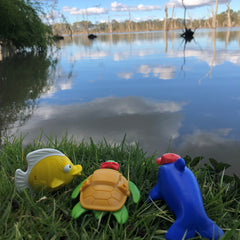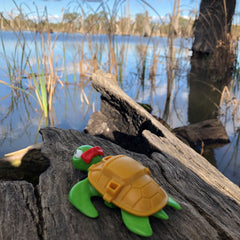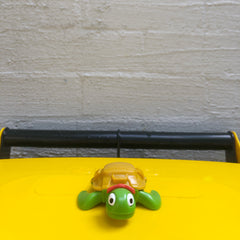What makes toys eco friendly?
This is a topic very close to our hearts. There are lots of toys that state they’re eco friendly. But are they really?

Our opinion? There are plenty of eco-friendly toys out there, it’s just a matter of knowing what to look for.
If you're shopping for eco-friendly toys, here’s our list of the key elements to look for – think of it as your eco-friendly shopping checklist!
- What are the toys made from? Is the material eco friendly, and is it ethically sourced?
- Where is it made? The closer to home, the better.
- What packaging does it come in? Look for minimal packaging, that’s fully recyclable.
- Is it recyclable? Check out our previous blog for more information.
Here’s more detail on each of these elements…
1. Look for toys made from sustainable materials
In our opinion, toys made from recycled or reprocessed materials are the most eco friendly. This is because the amount of water, energy and other resources (like trees!) required to produce them is a lot less, and they’re using material that would otherwise end up in landfill.

When looking for toys, here are some of the sustainable materials they could be made from:
- Recycled plastic, using material that could otherwise end up in landfill (just like our toys, which are made from recycled milk bottles)
- Wood – just check they’re ethically made from sustainably sourced wood (look for the FSC certification)
- Rubber – make sure it’s natural rubber, which is derived from trees
- Silicone – it’s made from silica, found in sand.
We’re also seeing discussion on, and development of, biodegradable plastics (bio-plastics), although our jury is still out on these. There is information to suggest that bio-plastics require extreme temperatures to break down (not possible in standard landfills) and can still break down into microplastics, which are terrible polluters for our oceans. But we’ll keep our eyes out for more information on this as it comes to light.
2. Look for toys made as close to home as possible
The less distance toys have to travel to their new owner, the better, as it reduces their carbon footprint.
We know that’s not always possible, as very few toys are made in Australia. So if they’re made overseas, take a look at the manufacturer’s website for their ethical credentials. What processes do they have in place to ensure their staff are being paid adequately, and are working in safe conditions?
3. Packaging
This is big one. So many toys are over-packaged and packed full of little plastic pieces (like ties and clips) which are difficult to recycle. Look for toys that don’t have too much packaging, and read the packaging to make sure it can be recycled. Big pieces of plastic and any cardboard parts should be fully recyclable.
4. Are the toys recyclable?
This is another one that’s very close to our hearts. Toys made from plastic should be recyclable – plastic is highly durable and can be reused many times. Our toys are fully recyclable, and can be used to make other products another 9 times. But unfortunately recycling all plastic toys is not as easy as we would like. If you’re interested in reading more about recycling toys, check out our blog on this topic!

We hope you've find this handy for the next time you're shopping for eco-friendly toys!
